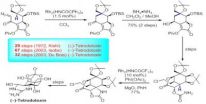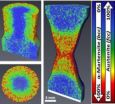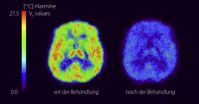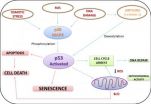(Press-News.org) White, brown and beige adipocytes, or fat cells, are inherently different. Each of these cell types has different functions and each plays its own role in metabolism. In the human body, white adipose tissue is by far the most prevalent. Its primary function is energy storage. On the other hand, brown adipocytes utilize available energy to generate heat but are only found in a few places in the adult human body. Beige adipocytes, which represent a special type of brown adipocytes, appear mixed with brown adipocytes in human brown adipose tissue or develop within the white adipose tissue, particularly under the influence of cold in rodents.
A team of researchers headed by Dr. Siegfried Ussar from the Institute for Diabetes and Obesity (IDO) at the Helmholtz Diabetes Center/ Helmholtz Zentrum München, partner of the German Center for Diabetes Research (DZD), and Professor C. Ronald Kahn from the Joslin Diabetes Center and Harvard Medical School has now succeeded in very specifically distinguishing the various adipocytes on the basis of their surface proteins. This is raising hope for a new method to treat those suffering from obesity and diabetes.
The good and the bad side of fat
Rapidly growing rates of obesity result in increasing rates of type 2 diabetes and other components of the metabolic syndrome. To ameliorate the consequences of excessive caloric intake and storage, modern medicine is seeking new ways to enhance energy expenditure to reduce body weight. "Because of its function as the body's thermal power station, brown adipose tissue has the ability to burn large quantities of energy that otherwise would be stored in white adipose tissue as fat," says first author Siegfried Ussar. For this reason, activation of brown adipose tissue using drugs offers an attractive approach to treat obesity and the illnesses that result from it, such as type 2 diabetes.
The amount of brown adipose tissue varies greatly from individual to individual, and until now it was not possible to determine its proportion reliably. Current methods are based on measuring this tissue's activity, which greatly depends on outside conditions, such as the temperature or diet. The newly discovered surface proteins now offer an activity independent approach. They additionally make it possible to selectively deliver substances to brown adipose tissue by targeting these proteins.
New hope to finally let fat melt away
Activation of the brown adipose tissue is currently one of the most promising approaches to battling adiposity,* opening up new avenues to reduce excess weight without reducing the calorie intake. This is why numerous publications from basic research describe new potential mechanisms to activate or propagate the human brown adipose tissue. "Translating these research results into practice often fails, however, because the identified mechanisms also have important functions in other organs, which can result in incalculable side effects," Dr. Ussar explains. "Our research represents a novel approach to this problem, because the surface markers that we have discovered are very specific for the individual fat types and independent of the metabolic activity."
The scientists hope that further development of their research results will allow to introduce active substances selectively into the brown adipose tissue and consequently reduce side effects. "We are already at work, partially in our own group and also in collaboration with other groups at the Helmholtz Zentrum München, to produce specific molecules that recognize these surface proteins to examine their efficacy," Dr. Ussar reports. "Our goal is to work with partners from industry to further develop these molecules for use in humans."
INFORMATION:
Additional information
*Adiposity: Also called obesity; this is a nutritional and metabolic disease with significant excess weight that is characterized by an increase in the body fat that goes beyond the normal measure with pathological effects. As a rule, it is caused by overeating and lack of exercise and is promoted by genetic factors. Obese patients also are more likely to suffer from type 2 diabetes.
Original publication:
Ussar, S. et al. (2014). ASC-1, PAT2, and P2RX5 are cell surface markers for white, beige, and brown adipo-cytes, Science Translational Medicine, doi: 30 July 2014, Vol. 6, Issue 247, p. 247ra103, DOI: 10.1126/scitranslmed.3008490
Link to publication
Special Notes to Reporters:
More information, including a copy of the paper, can be found online at the Science Translational Medicine press package at http://www.eurekalert.org/jrnls/scitransmed
As German Research Center for Environmental Health,Helmholtz Zentrum München pursues the goal of developing personalized medical approaches for the prevention and therapy of major common diseases such as diabetes mellitus and lung diseases. To achieve this, it investigates the interaction of genetics, environmental factors and lifestyle. The Helmholtz Zentrum München has about 2,100 staff members and is headquartered in Neuherberg in the north of Munich. Helmholtz Zentrum München is a member of the Helmholtz Association, a community of 18 scientific-technical and medical-biological research centers with a total of about 34,000 staff members.
The German Center for Diabetes Research e.V. brings together experts in the field of diabetes research and combines basic research, epidemiology and clinical applications. The members of the association are the German Diabetes Center (DDZ) in Düsseldorf, the German Institute of Human Nutrition (DifE) in Potsdam-Rehbrücke, the Helmholtz Zentrum München – the German Research Center for Environmental Health, the Paul Langerhans Institutes of the Carl Gustav Carus University Hospital in Dresden and the Eberhard Karl University of Tübingen as well as the Gottfried Wilhelm Leibniz Research Association and the Helmholtz Association of German Research Centers. The aim of the DZD is to find answers to unsolved questions in diabetes research by adopting a novel, integrative approach and to make a significant contribution towards improving the prevention, diagnosis and treatment of diabetes mellitus.
TheInstitute for Diabetes and Obesity (IDO) erforscht die Erkrankungsmechanismen des Metabolischen Syn-droms mit systembiologischen und translationalen Ansätzen. Mittels zellulärer Systeme, genetisch modifizierter Mausmodelle und klinischer Interventionsstudien sollen neue Signalwege und Zielstrukturen entdeckt werden. Ziel ist die interdisziplinäre Entwicklung innovativer Therapieansätze zur personalisierten Prävention und Behandlung von Adipositas, Diabetes und deren Begleiterkrankungen. Das IDO ist Teil des Helmholtz Diabetes Center (HDC).
Media contact
Communication Department, Helmholtz Zentrum München- German Research Center for Environmental Health (GmbH), Ingolstaedter Landstr. 1, D-85764 Neuherberg, phone: 0049 89 3187 2238, e-mail: presse@helmholtz-muenchen.de
Scientific Contact
Dr. Siegfried Ussar, Helmholtz Zentrum München - Deutsches Forschungszentrum für Gesundheit und Umwelt (GmbH), Institute forDiabetes and Obesity, Ingolstädter Landstr. 1, D-85764 Neuherberg - Tel. 0049 89-3187-2047, e-mail: siegfried.ussar@helmholtz-muenchen.de
Hope for the overweight
2014-07-31
ELSE PRESS RELEASES FROM THIS DATE:
Privileged strategies for direct transformations of inert aliphatic carbon-hydrogen bonds
2014-07-31
Functional group transformations are central to organic synthesis. Traditionally, the functionalities used in such transformations are highly active organic groups such as halogens, ester groups and hydroxyl groups. Carbon–hydrogen bonds are ubiquitous structural motifs in organic compounds, but they are not considered to be functional groups because (1) in general, the bond dissociation energy of a C–H bond is high, and therefore, such bonds are thermodynamically hard to break; and (2) the selective activation of one C–H bond among many similar and different C–H bonds ...
Neutron tomography technique reveals phase fractions of crystalline materials in 3-dimensions
2014-07-31
The method overcomes limitations of existing techniques which are limited to the surface or small-sized specimens, and allows a 3-D representation of the phase fractions within the sample volume. The work has just been published in the journal "Advanced Materials".
"For many engineering applications it is of major importance to characterize the bulk of materials spatially, instead of only probing selected locations. The new method provides exactly that capability, and the HZB-UTK team has demonstrated it by using samples made from stainless steel that undergo a phase ...
Vision-correcting electronic displays could let users dispense with glasses
2014-07-31
Researchers at the MIT Media Laboratory and the University of California at Berkeley have developed a new display technology that automatically corrects for vision defects — no glasses (or contact lenses) required.
The technique could lead to dashboard-mounted GPS displays that farsighted drivers can consult without putting their glasses on, or electronic readers that eliminate the need for reading glasses, among other applications.
"The first spectacles were invented in the 13th century," says Gordon Wetzstein, a research scientist at the Media Lab and one of the display's ...
Vacuum treatment may limit damage after traumatic brain injury
2014-07-31
July 31, 2014 – Controlled application of vacuum pressure is a promising approach to limiting tissue damage after traumatic brain injury (TBI), suggests an experimental study in the August issue of Neurosurgery, official journal of the Congress of Neurological Surgeons. The journal is published by Lippincott Williams & Wilkins, a part of Wolters Kluwer Health.
"Mechanical tissue resuscitation"—consisting of vacuum pressure applied over the injured area of the brain—shows promise as a safe and effective treatment for TBI, according to the research report by Dr. Louis ...
UT Dallas study reveals effect of loud noises on brain
2014-07-31
Prolonged exposure to loud noise alters how the brain processes speech, potentially increasing the difficulty in distinguishing speech sounds, according to neuroscientists at The University of Texas at Dallas.
In a paper published this week in Ear and Hearing, researchers demonstrated for the first time how noise-induced hearing loss affects the brain's recognition of speech sounds.
Noise-induced hearing loss (NIHL) reaches all corners of the population, affecting an estimated 15 percent of Americans between the ages of 20 and 69, according to the National Institute ...
Monoamine oxidase A: Biomarker for postpartum depression
2014-07-31
This news release is available in German.
Many women suffer from baby blues after giving birth. Some even develop full-blown postpartum depression in the weeks that follow. Monoamine oxidase A, an enzyme responsible for the breakdown of neurotransmitters like dopamine and serotonin, plays an important role in this condition. In comparison to healthy women, women who experience postpartum depression present strongly elevated levels of the enzyme in their brains. This was discovered by a Canadian-German research team including Julia Sacher from the Max Planck Institute ...
Research reveals pervasive implicit hierarchies for race, religion, and age
2014-07-31
As much as social equality is advocated in the United States, a new study suggests that besides evaluating their own race and religion most favorably, people share implicit hierarchies for racial, religious, and age groups that may be different from their conscious, explicit attitudes and values.
The study findings appear in Psychological Science, a journal of the Association for Psychological Science.
"People from relatively low-status groups can readily report that their group does not have the most power. At the same time, most groups, even if they have less social ...
Key to aging immune system is discovered
2014-07-31
There's a good reason people over 60 are not donor candidates for bone marrow transplantation. The immune system ages and weakens with time, making the elderly prone to life-threatening infection and other maladies, and a UC San Francisco research team now has discovered a reason why.
"We have found the cellular mechanism responsible for the inability of blood-forming cells to maintain blood production over time in an old organism, and have identified molecular defects that could be restored for rejuvenation therapies," said Emmanuelle Passegué, PhD, a professor of medicine ...
Researchers at SGH and Duke-NUS a step closer to finding treatment for dengue fever
2014-07-31
There have been several news reports that the world's first dengue vaccine will be available next year. However, the latest clinical trials show that the vaccine only provides a protection of around 50 per cent for DENV-2 and DENV-1, which are commonly found in Singapore.
DENV-1 accounts for 90 per cent of infections locally as a large population lacks the immunity against this particular dengue virus serotype. Until a vaccine that can offer higher protection becomes available, it is crucial to find a suitable treatment for dengue fever, as there is presently none available ...
Senescence in adipose-derived stem cells and its implications in nerve regeneration
2014-07-31
Adult mesenchymal stem cells, specifically adipose-derived stem cells have self-renewal and multiple differentiation potentials and have shown to be the ideal candidate for therapeutic applications in regenerative medicine, particularly in peripheral nerve regeneration. Adipose-derived stem cells are easily harvested, although they may show the effects of aging, hence their potential in nerve repair may be limited by cellular senescence or donor age. Cellular senescence is a complex process whereby stem cells grow old as consequence of intrinsic events (e.g., DNA damage) ...





